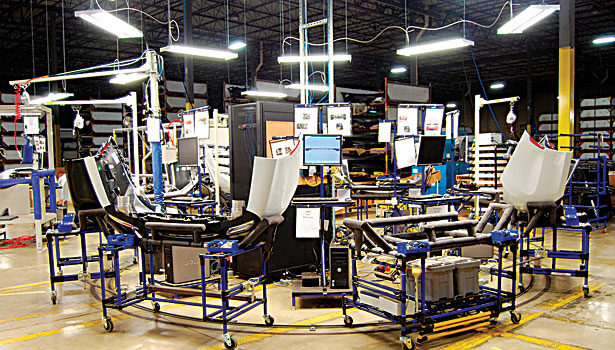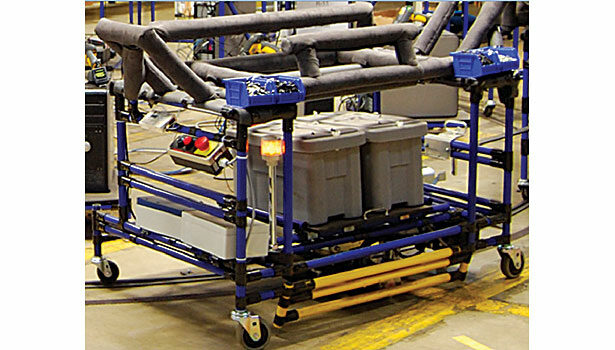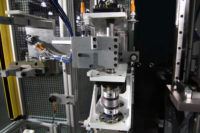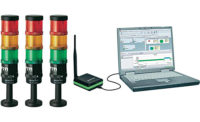When founded in 1925, Hollingsworth Logistics Group (HLG) was one of the world’s first expediters of auto parts. Today, the company is based in Dearborn, MI, and is a lead logistics provider to manufacturers and distributers in many industries.
HLG has broadened its service capabilities over many decades through a series of strategic joint ventures and mergers. One joint venture is Modular Automation Systems LLC, which HLG and Magna International developed in 2000 to assemble and sequence auto parts into OEM assembly plants. HLG owns 60 percent and maintains management control.
For one customer, Modular Automation provides finished front and rear fascia assemblies on a just-in-time basis. Until recently, the assembly process was labor intensive and required a large amount of floor space.
The process began with workers placing fascia outer shells on carts equipped with protective cradles. These carts were manually moved to each production cell, where the worker scanned the shells with a handheld scanner to learn which parts had to be assembled inside and outside each fascia.
Next, the completed fascias were brought to a quality control station and checked for proper assembly and functionality. Finally, they were loaded in proper sequence on mobile racks and delivered to assembly plants.
Christian Cantrell, program manager and process engineer for Modular Automation, says the process had several drawbacks. It limited productivity, created sequencing errors, and damaged the class A finish on the fascias.
Over the years, Modular had been using Creform Corp.’s system of plastic-coated steel pipe and joints to create material-handling racks, tables and carts. The two companies met in the fall of 2013 and determined that a carousel system would be better for fascia assembly. Cantrell says it was essential that the system worked in tandem with the company’s automated guided vehicles (AGVs)—also made by Creform—and cost much less than a traditional turnkey system.
The carousel system consists of eight carts that are hitched together and ride on casters along a rail to serve eight pie-shaped workstations. Each cart features adjustable 28-millimeter OD pipe, metal joints and a rack that holds fascia components in place during assembly. The base of the lead cart is a battery-powered AGV that travels at 0.05 mph and has a pulling capacity of 1,496 pounds.
Each station has a computer keyboard and monitor mounted to a Creform-built structure. The monitor provides a complete sequence of the parts to be installed on each fascia. The system handles up to 250 part numbers.
Because the fascia is only handled when being placed on or removed from the cart, it is virtually impossible for a fascia to get out of sequence. Limited handling also minimizes the likelihood of finish damage to a fascia.
Cantrell says the pie-shaped work areas in the station take up 50 percent less floor space than the old system. He notes that, initially, Modular set a production target of 50 fascias in 47 minutes. However, the first carousel exceeded expectations and completed the fascias in 36 minutes.
“The best part is we [can] complete each assembly operation using fewer [workers],” notes Cantrell. “This allows us to reassign them to other value-added tasks and operations.”
For more information on continuously moving assembly lines, call 800-839-8823 or visit www.creform.com.




